Chuck Scarborough marks 50 years as WNBC/4 anchor: 'I developed a reservoir of trust with the audience'

A white-noise hum fills the WNBC/4 newsroom at 30 Rock late on a recent Thursday as the “5 p.m.” approaches. The “6 p.m.” anchorman strides through — a familiar figure and a familiar routine.
Up close and personal, as the saying goes, he hasn't changed all that much, either — or hasn't appeared to. Hair brushed back, silver on the sides, eyes ice blue, this is the same face that has filled TV screens for decades.
But what's surprising, if not quite shocking, is that this face — this anchorman — turned 80 last November.
If that does come as a shock, then consider the milestone that arrives shortly.
Chuck Scarborough's 50 years at Ch. 4 — the half-century mark is March 25 — are perhaps most easily rendered in numbers. They're big ones, too, except that nobody has ever bothered to count how many programs, stories, specials, teases, or promos Scarborough has actually appeared in. The obvious point is that no one — reporter or anchor — has ever appeared in more.
'Beyond gratitude, and a fair amount of astonishment'
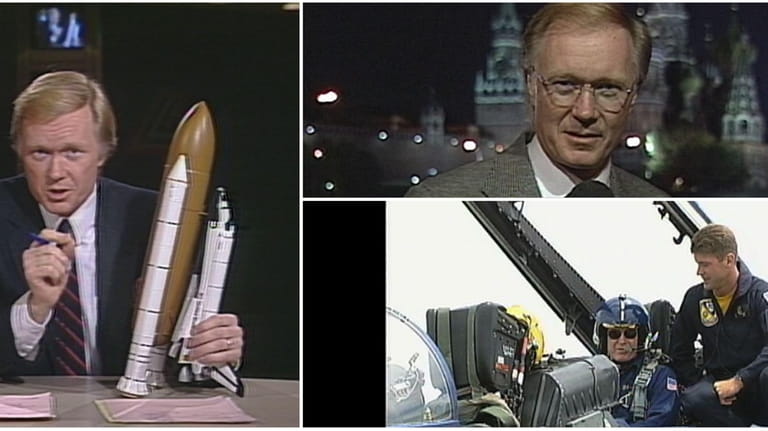
Clockwise from left: Chuck Scarborough telling viewers about the Challenger disaster in 1986; on assignment in Moscow in 1996; and preparing to fly with the Blue Angels.
In a small office set off to the side of the cavernous newsroom where he's spent so much of his life — so much of ours, too — Scarborough is pressed on how he feels about a landmark few have reached in the history of American television news, or may ever reach again. “Beyond gratitude,” he says, “and a fair amount of astonishment.”
Astonishment is warranted. There are believed to be only two anchors in the United States who have done this longer — Dave Ward, of Houston's KTRK/13 (who retired in 2017 after 51 years) and Don Alhart, of Rochester's WHAM/13, who hit the 50-year mark in 2016 and is still on the air.
Yet no disrespect to either Houston or Rochester, but they are not New York City.
Over these past 50 years, Scarborough has anchored Ch. 4's coverage of 9/11, the COVID pandemic, AIDS, Superstorm Sandy, five major plane crashes, three blackouts, a couple of Wall Street crashes and seven mayors, beginning with Abe Beame. There was Son of Sam, a city's near-bankruptcy, a mob guy named Gotti and another guy named Trump. During the rip-roaring if-it-bleeds-it-leads era of the 1970-80s, Ch. 4 — not to mention Chs., 2, 5, 7, 9 and 11 — documented enough mayhem to earn New York the title Murder Capital USA. Indeed, a lamentable WNBC November sweeps series from 1985 even wondered, “Is God punishing us?”
From a TV news perspective, no city on the planet has been busier these past 50 years, not remotely. Scarborough was at the center of it all.
Then there were what might be called the battles from within. He was at the center of those, too. Over these decades, NBC underwent three ownership changes, beginning with the especially tumultuous General Electric era in 1986. After each of these, intense pressure was placed on the flagship station and lead anchor to improve news ratings, which they often did and sometimes did not. News directors, reporters, and other anchors came and went, yet that most iconic of local TV news teams — Chuck Scarborough and Sue Simmons, known to one and all as Chuck 'n Sue — carried on.
'A symbol for the station'
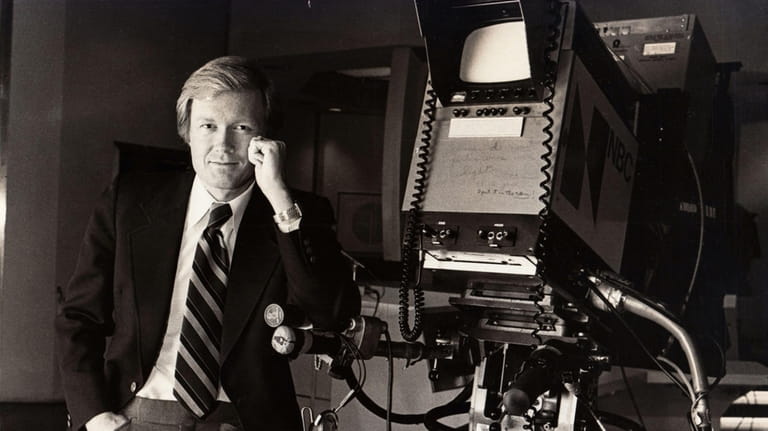
A 1979 portrait of longtime NBC news broadcaster Chuck Scarborough at the broadcast studios in Midtown Manhattan, New York City. Credit: Alamy Stock Photo/Ira Berger
How did Chuck last these 50 years? “That's the $64,000 question,” he says.
Surviving half a century in any job seems daunting, except in New York TV news, where it's unheard of. WABC/7's Bill Beutel came close, at 37 years, retiring in 2003 (he died in 2006). Rafael Pineda, of Univision flagship WXTV/41, came closer, at 41 years, until his retirement in 2013. Among active anchors, only WPIX/11's weekend anchor Kaity Tong — 43 years and counting — is closest.
Scarborough “gave himself to the viewer and the viewer trusted him back. He's a symbol for the station and if [Ch. 4] doesn't have him, you have a station that's just another button on the box,” says Dan Forman, a veteran TV news director, including at Ch. 4 during the '90s and '00s, when he was station manager and vice president of news. “It's not like there are just three sources for news anymore.”
Indeed, there are many and as linear TV declines, the importance of the top anchors increases, or at least it does in theory. Think of them as lines that tether their stations to shore — stations that drift further and further out with the tide each passing year. Their anchors are familiar, likable, trustworthy, and have been there night after night, year after year, crisis after crisis.
And on TV anyway, they are most viewers' only link to the past, other than reruns, which confers on them an aura of nostalgia. To put this in some perspective, Scarborough started at Ch. 4 two years after Johnny Carson's “Tonight Show” moved from 30 Rock to Burbank, and a year before “Saturday Night Live” launched. When he arrived at Ch. 4 to anchor a new 5 p.m. newscast, Scarborough's program originated out of the studio Carson had recently vacated.
'I simply came in here and did my job'
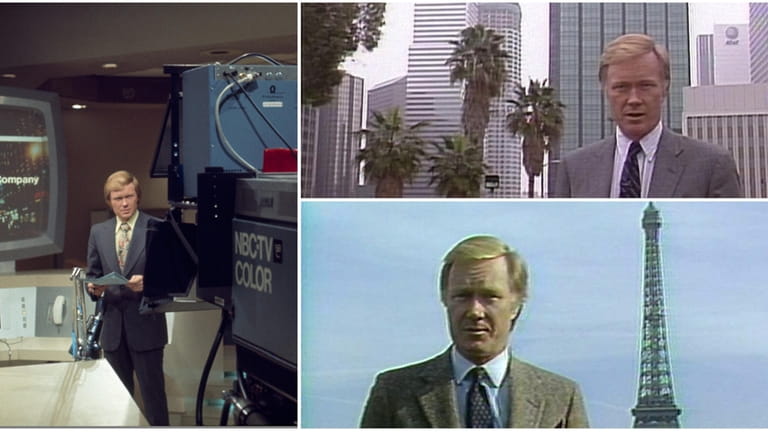
Clockwise from left: Scarborough in the WNBC studio in 1974, on assignment in Los Angeles in 1989 and in Paris in 1996.
Nevertheless, Scarborough insists his durability begins with the work and always has — not nostalgia or theories about anchor familiarity.
“My goal is to tell stories people are interested in and tell them well, and for whatever reason, I developed a reservoir of trust with the audience — and even as the ratings fluctuated, other data [management] picked up through research probably noted there was something of value here, and that I should be spared the ax if the ax had to fall. But I simply came in here and did my job and had the most fun I could with it at the time, and somehow the audience approved.”
Paula Madison, Ch. 4's assistant news director from 1989 to '96, then news director until 2000, said via email, “I was completely secure having Chuck be the lead anchor on any breaking news story — and often catastrophic event — that occurred either locally or internationally. I’m sure my predecessors and successors experienced that same exact confidence in Chuck. [He's] a beloved fixture.”
On Monday, marking the 50th, the Empire State Building will be lit in blue and gold, while Ch. 4 will air a series of tributes all week, culminating in a half-hour special on Scarborough's career (March 28 at 7 p.m.).
Before New York, Boston and Biloxi
Born in Pittsburgh, Scarborough joined the Air Force at the age of 17 — his father, Charles, had been a decorated pilot with the Army Air Corps during World War II — and went to Texas for basic training, and later to Keesler Air Force Base in Mississippi. After he was discharged, he became a production manager at nearby WLOX, a new TV station in Biloxi, finished college, then made a couple of stops at bigger stations. In 1972, he joined Boston's WNAC/7 (now WHDH).
At first, Scarborough had doubts about the move — the station was a Boston also-ran and news ratings were abysmal. But terrible tragedy has a way of diverting viewer attention, and that's what happened on July 31, 1973, when Delta Flight 723 crashed into a sea wall at Logan Airport, killing 88 of 89 passengers. Scarborough followed emergency crews onto the tarmac, filming a horrific scene that would become part of a you-are-there prime-time special that aired later that night. Scarborough, and his also-ran station, “owned” the year's biggest story.
He now calls the coverage “a template” of what he'd do when he came to New York the following year — that sort of wall-to-wall coverage that depends on anchors and reporters to provide a constant stream of information, hour after hour. It's commonplace now, but unheard of on TV then.
Second thoughts about coming to New York
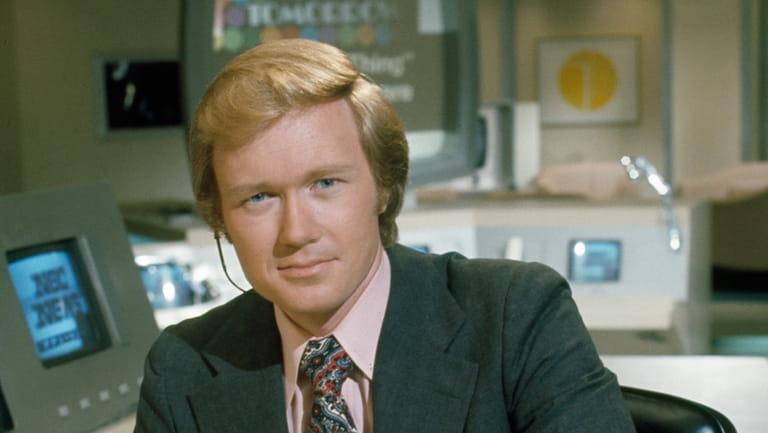
The early days: Chuck Scarborough is shown in the WNBC studios. Credit: WNBC
Scarborough now says he also had second thoughts about Ch. 4 because “the station was in terrible shape, had gone through several sets of anchors and was having trouble finding anyone to work for them at that point. I also had an offer to go to WABC [the news leader] as weekend anchor and weekday reporter.”
But “I thought about the upside gain. I had just been through [problems in Boston] and came out the other end fine, so I thought, if we can get this thing up and running — it's a bigger challenge but probably a bigger reward at the end. That's how the coin flip worked.”
In June 1975, just under a year after joining Ch. 4, Scarborough was in a “live” truck heading out to Long Island for a story when Eastern Flight 66 crashed at JFK, killing 113. Scarborough got to the airport, and Ch. 4 led coverage of the tragedy. As at WNAC, it became a huge turning point for Ch. 4 — deep in third place behind Chs. 2 and 7 — and for the new anchor.
Enter Sue Simmons
Another major turning point arrived in 1980, when Scarborough was paired with a newcomer from Washington, D.C., on the 6 and 11 newscasts. New York TV's most famous anchor team had a rocky start — Sue Simmons was replaced on the 6 after a few months, then later returned — but over the next 32 years they were inseparable.
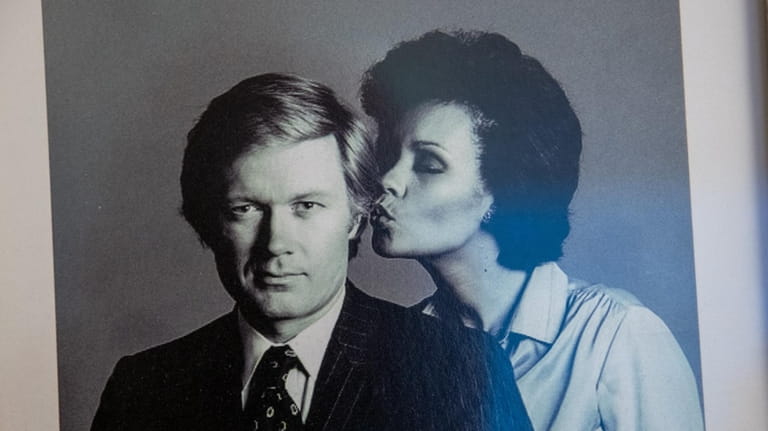
A framed photo of Chuck Scarborough and co-anchor Sue Simmons taken by photographer Franceso Scavullo sits in Scarborough's office. Credit: Ed Quinn
Scarborough says he “probably” would not have survived 50 years without Simmons, who retired in 2012.
"I'm not very articulate about this but we were such opposites, and somehow we meshed," Simmons told Newsday. "He was a lot more on the serious side when I first met him, but I chipped away over the years and he became such a fun guy. He had a wicked sense of humor, but humor most of the time he couldn't do on the air, so viewers always saw him as a straight-up guy."
Over the years, there were offers to go elsewhere, including the network, although one NBC News-driven initiative — a 1989 magazine show called "Yesterday, Today and Tomorrow" that used re-creations and that he co-anchored with Maria Shriver and Mary Alice Williams — was short-lived. Scarborough says he never took any of these other offers seriously.
“I found that working here, working for WNBC New York, was so fascinating, and I had a lot of latitude to go wherever I wanted to on a story, and on any topic.”
A longtime friend and colleague, Ch. 4 weather anchor Dave Price, offers this perspective: “In the days when networks were buying talent, Chuck had other opportunities — countless ones — but there's a saying about actors who want to be singers and singers who want to be actors. He had the wisdom to say 'I love this. I've found my place and my plate is full.'”
The anchorman — that most familiar of them all who has been in our line of sight for half a century — says he's wrapping up a new contract that will keep him on the “6" for a while to come. Retirement, he explains, is a problem he'd rather not worry about. “I do think about [it] and nothing has popped into my head that's more interesting than what I'm doing now.”
